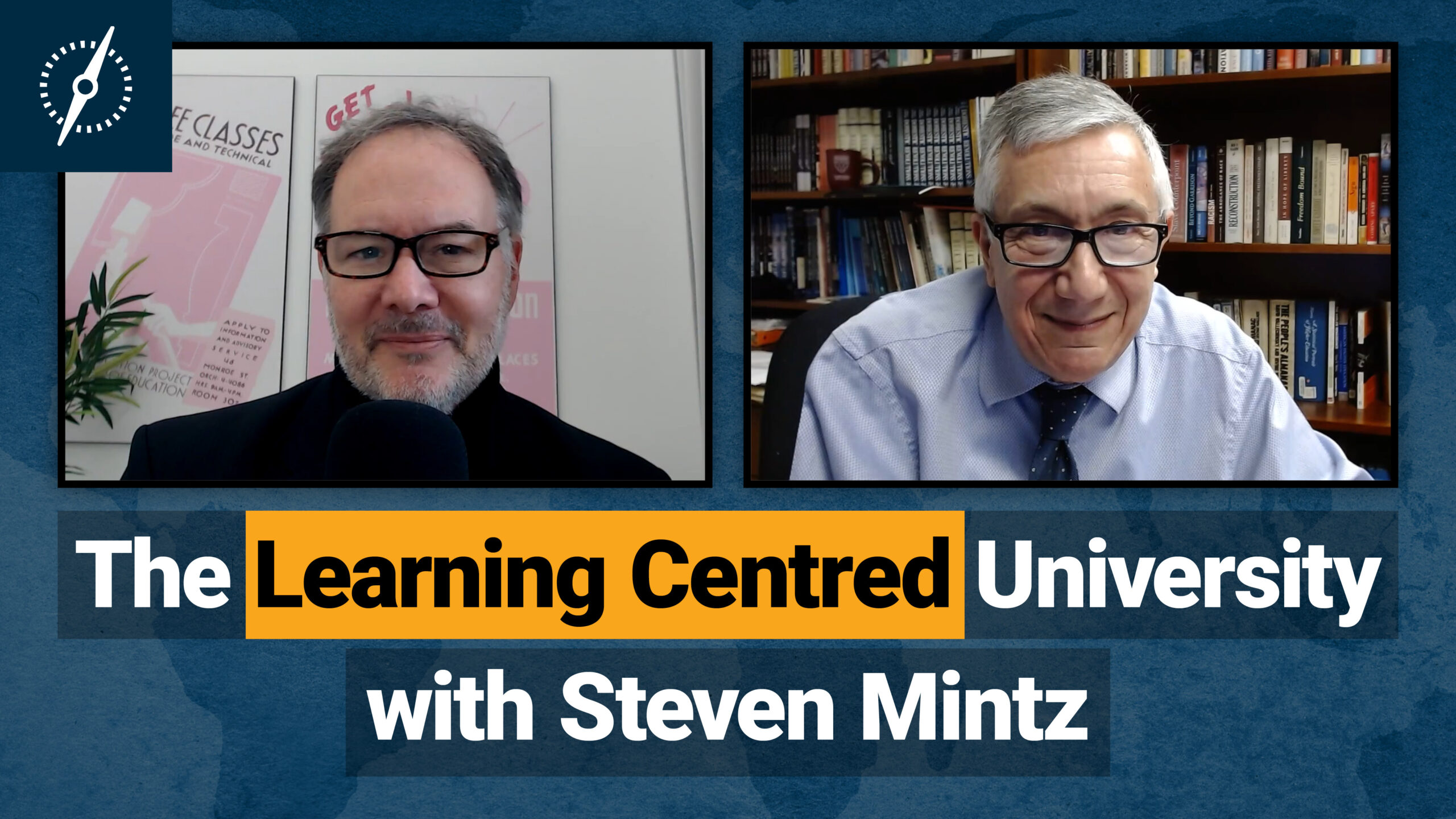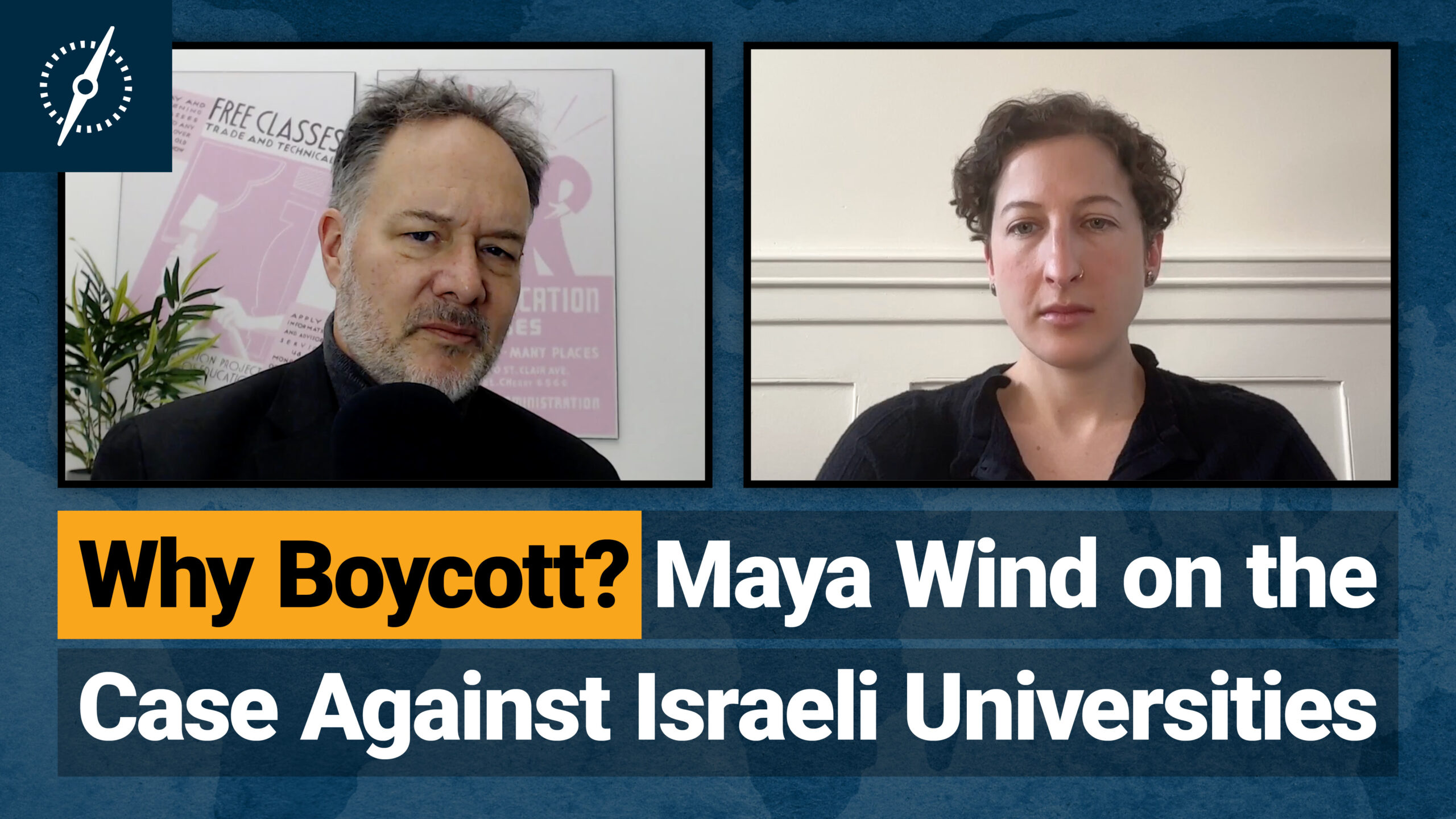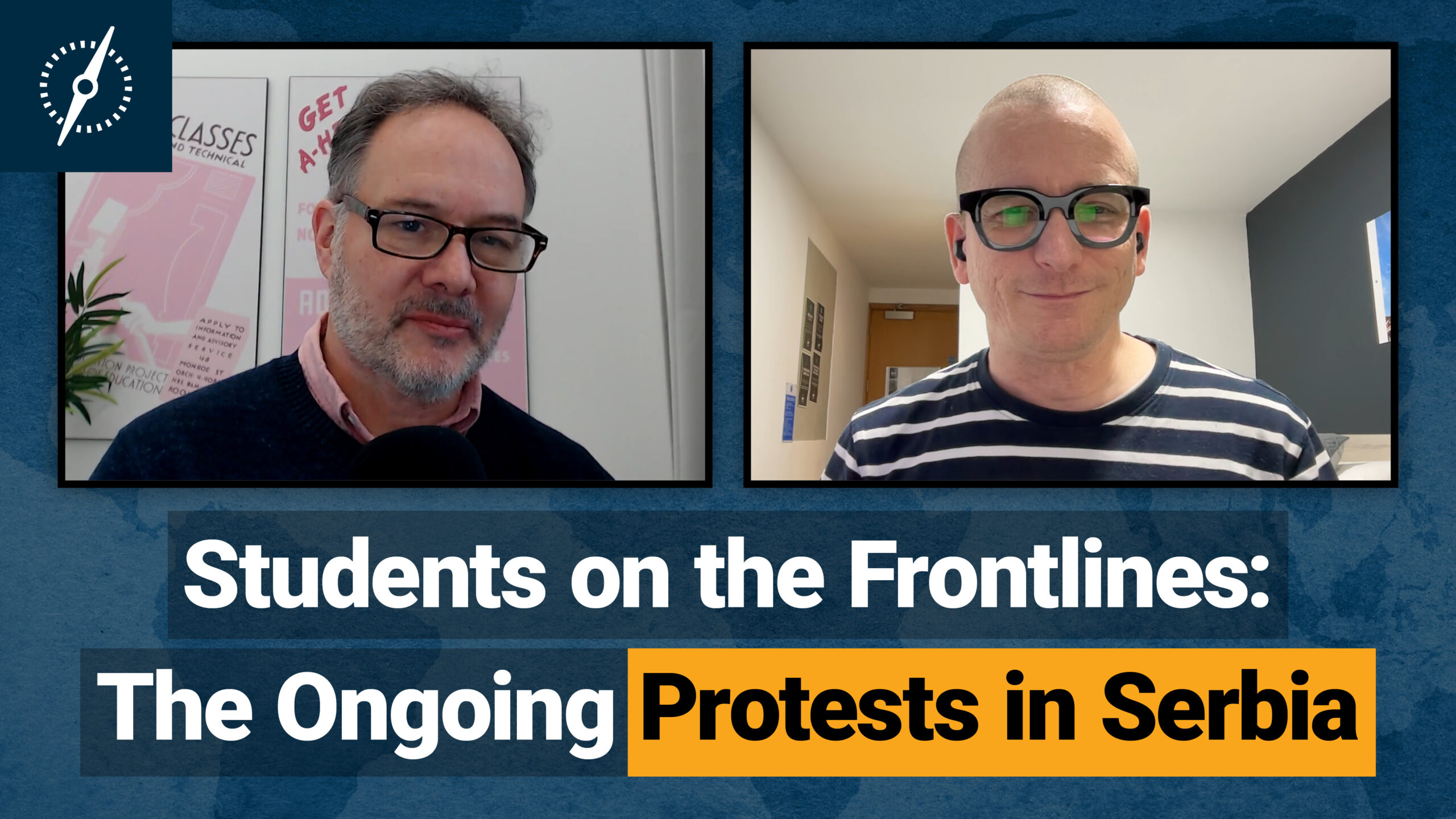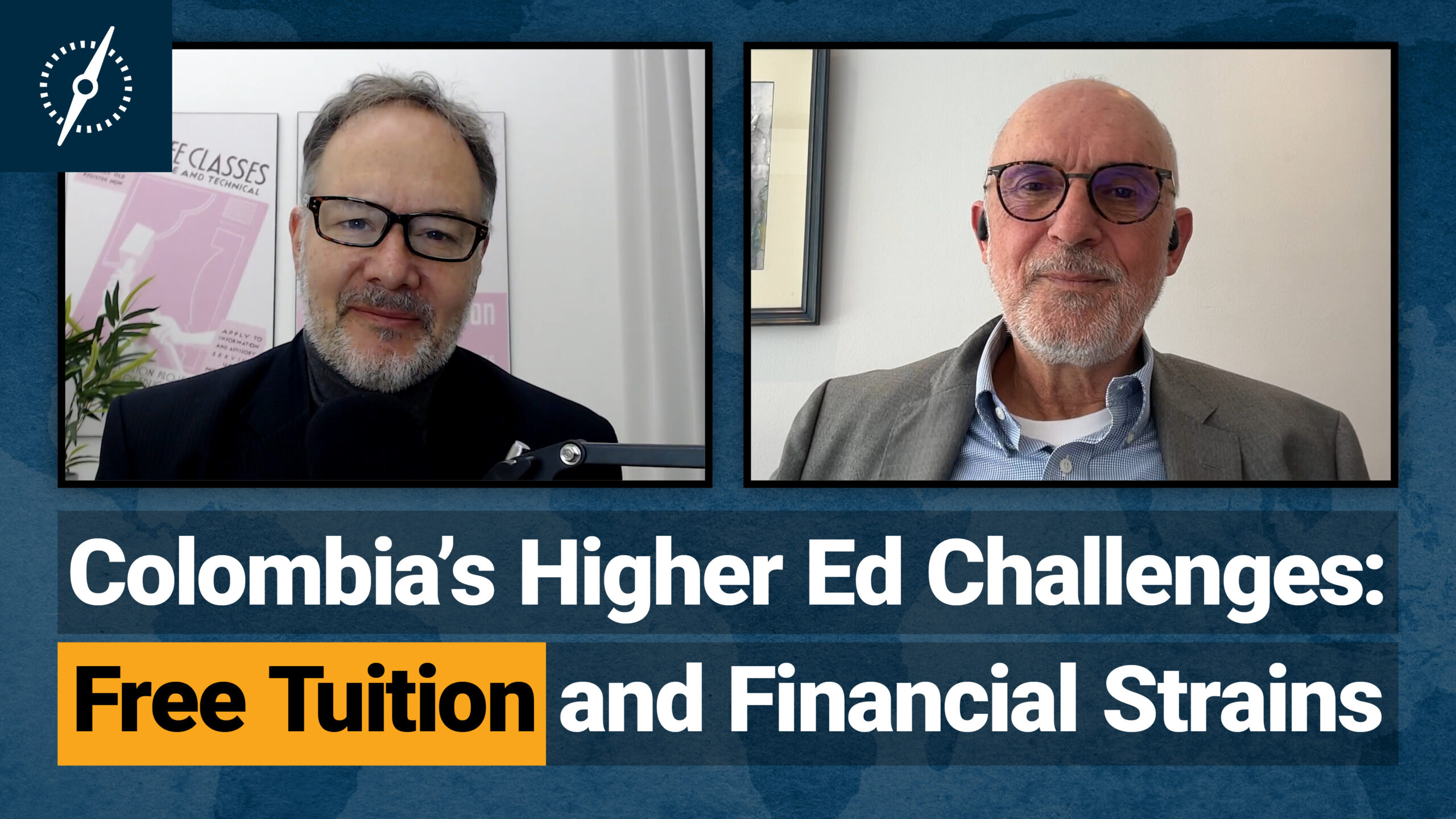Sometimes books can be time machines. A few months ago, I started re-reading Ben Wildavsky’s excellent ‘The Great Brain Race: How Global Universities are Reshaping the World‘. First published by Princeton University Press in 2010. And it took me literally to another planet. An optimistic one where higher education and globalization went hand in hand to enrich the lives of students everywhere and which powered universities to new heights of competition and discovery. When the book came out, I remember reading all of this and being somewhat skeptical. But with all of the nonsense of the past decade or so in global higher education, frankly, it all sounds pretty good to me right now.
Ben is, of course, a prolific author, and he’s written a great deal on the topic of higher education, most recently, ‘The Career Arts: Making the Most of Colleges, Credentials, and Connections‘. I could have asked Ben to come on to speak about pretty much any of them, but boy, did I want to talk about The Great Brain Race because it’s such a nostalgia sugar high.
And so, on what is roughly the 15th anniversary of its publication, Ben agreed to come on and enlighten us about what seemed new and fresh back in 2010, things like global rankings and lavishly funded branch campuses, and let me ask him annoying questions, about whether and how it’s all gone wrong. And I’m very happy that he did.
And so enough for me, let’s throw things over to Ben.
The World of Higher Education Podcast
Episode 3.19 | The Great Brain Race, 15 years later with Ben Wildavsky
Transcript
Alex Usher (AU): Ben, 15 years ago, you wrote The Great Brain Race. What was the thesis? What trends were you trying to illustrate?
Ben Wildavsky (BW): I was trying to take the much-discussed phenomenon of globalization—which, of course, we heard a lot about, including in bestsellers like The World is Flat by Tom Friedman—and apply that to higher education. I felt there was already so much evidence, both emerging and well-established, that globalization had made a significant impact on higher ed.
I wanted the book to be both descriptive and, to some extent, prescriptive. I set out to highlight what I saw as a remarkable but somewhat under-discussed phenomenon: the massive mobility of students around the world. And beyond that, the mobility of faculty as well.
Actually, David Lodge just passed away last week—he wrote a wonderful trilogy of academic novels that had an impact on me because he was such a sharp observer. But basically, I was looking at the mobility of students, faculty, and research. And to some extent, even the mobility of campuses themselves, with the rise of branch campuses and the increasing influence of global university rankings, which acted as a way to keep score.
So, at its core, the book’s thesis was that much like I believe in markets and free trade as beneficial for the world economically, I also made the case for what I called free trade in minds—arguing that the global exchange of knowledge and talent has overwhelmingly positive effects. That idea sometimes faces backlash, often based on what I called academic mercantilism—the notion that countries should cling to their share of knowledge and fear if others start producing more PhDs.
But I argued that knowledge is not a zero-sum game. In fact, we should welcome the expansion of education worldwide. If more people gain access to better education, it benefits the world as a whole.
AU: You start the book by talking about the global war for talent. I have to say, I haven’t heard that term in a few years. We’re now in a world of tariffs and growing concerns about immigration. You actually interviewed me about this about a year ago. So, are we still in a global war for talent or not?
BW: You know, I think there are two ways to answer that. I don’t know that we hear the rhetoric about the war for talent as much anymore, but if you talk to people in the global corporate world, they are still acutely aware of their need for well-trained workers. On the consumer side—on the student side—there’s still a strong demand for building human capital. And the evidence that education is critical for economic advancement seems as strong as ever.
So, whether or not we still use the phrase war for talent, I don’t know. But look at what’s happening right now—we’re recording this on the verge of the second Trump administration. There’s a huge internal battle among Republicans over H-1B visas, which are issued to highly skilled university graduates. The assumption is that these graduates have talent since they’ve studied at American universities, and many foreign students want to stay and work in the U.S.
This tension has existed in the Republican Party for a long time. Not to get sidetracked, but when I started working in Washington in 1995 for National Journal, the first article I wrote was about Republican infighting over free trade. Back then, people like Pat Buchanan represented the more economic nationalist wing of the party. That strain has become much more dominant in the Trump era. However, you still have figures like Elon Musk and others in Silicon Valley—people who see the clear benefits of allowing talented foreign graduates to stay in the U.S. and contribute to the innovation economy.
So, again, whether or not we still use the term war for talent, I think there’s a strong awareness of the connection between education, experience, and economic growth.
AU: So, to the extent that there is—or was—a war for talent 15 years ago, one of the ways people thought a country like the U.S. could win was by building what they called world-class universities. Our mutual friend, Jamil Salmi, even wrote a book with that title, right? And quite famously, I guess, just before your book came out. But the record of actually achieving world-class status is pretty small, isn’t it? Obviously, you have Harvard, Stanford, and Yale—places that were built 150 years ago and reached that status at least 50 years ago. Who has actually become a world-class university since then? A few in China, maybe the National University of Singapore, maybe Paris-Saclay through the merger process. Why do you think we haven’t seen more of this? Is achieving world-class status simply too difficult?
BW: That’s a great question. To some extent, it depends on expectations—should we have seen an equal distribution of world-class universities around the globe by now, proportional to population or economic development? I don’t think so. I see it more as an aspirational goal.
Many places—China, Germany with its Excellence Initiative, and others—clearly recognized the need to build high-quality research universities modeled on the U.S. system. And of course, as you know, and as you’ve discussed with other guests—and as I mention in my book—that U.S. model itself was originally based on the German Humboldtian Research University of the 19th century. So, there’s been this back-and-forth influence over time.
But I think the more important question isn’t necessarily how many institutions have achieved world-class status. Sure, you can point to the National University of Singapore, some Chinese universities, and Paris-Saclay. But what really stands out—something Jamil Salmi wrote about so well—is why certain institutions have succeeded.
Take the National University of Singapore. It embraced the merit principle, while the University of Malaya took a more insular approach—implementing admission quotas for certain ethnic groups instead of competing globally for top talent. NUS made a conscious decision to compete on a level playing field of excellence.
So, I’m not trying to dodge the question, but I think in academia, not every institution is aiming for world-class status. Many universities focus on serving the masses, which is valuable in its own right. But at the top level, whether or not you break into the top 10 or top 20, if research excellence is your North Star, then that, to me, is a triumph of the aspirational principle of being world-class.
AU: One way people tried to keep score in the world-class university race was through rankings. You dedicate a whole chapter to global rankings in your book. At the time, I remember thinking that this seemed newer to Americans than to everyone else. The U.S. started rankings back in the 1980s with U.S. News & World Report, but those rankings focused on very different factors. Now, we have more and more rankings—it feels like a new one comes out every couple of months. But do these rankings actually matter? Have they become more consequential over time, or not? Because I don’t get the sense that they’re driving policy the way they used to. And in your country, in the U.S., I don’t see much awareness of how far down the rankings the second- and third-tier American universities have fallen. The top-tier schools are still at the top, but the U.S. used to have 40% of the top 500 universities—now it’s maybe 20–25%. A lot of those second-tier institutions have dropped off, yet there’s been no reaction in the U.S. Why do you think global rankings have had less impact than expected?
BW: Honestly, Alex, I can’t say I follow this as closely as I once did. But looking at the U.S. side of things, we’ve always been—famously or infamously—insular when it comes to higher education.
We tend to focus more on how states compare to one another or on issues like student access to top institutions, especially economic access, which I think is a valid concern. But we don’t really worry about how our universities stack up internationally in the rankings. That’s partly a reflection of noblesse oblige—we’ve been such a dominant global force in higher education for so long that there hasn’t been a real sense of urgency.
Despite the backlash against globalization and growing protectionist trends, the U.S. still remains the top destination for international students. And unlike many countries that have just one or two standout universities, we have what people in sports would call a deep bench—not just a few great universities, but dozens of truly world-class institutions.
So, when I mention noblesse oblige, I’m half-joking, but the reality is that there’s never been much concern about losing that top-tier status. At the highest levels, sure, people care about reputation, but the U.S. doesn’t have a centralized Ministry of Education or a national funding mechanism that directly ties money to rankings, the way some other countries do.
Our mutual friend Ellen Hazelkorn has written a lot about how rankings can create problematic policy incentives, but that’s just never been a major factor in the U.S. In other countries, I’m not sure how much weight rankings still carry, but I think there’s probably still a sporting interest in the latest Times Higher Education or QS rankings—seeing where universities land each year.
That said, the idea that universities can directly link funding decisions to ranking outcomes—and that improving a ranking will necessarily lead to positive consequences—seems to be something people are increasingly skeptical about. From what I can tell, there’s a lot more agnosticism about rankings than there used to be.
AU: Back in 2010, one of the things you were really interested in was the still-new rise of branch campuses. I think you spent time in Education City in Doha and spoke with John Sexton of NYU in Abu Dhabi. At the time, you saw these as representing a new stage of globalization—I think that’s the phrase you used in the book. How do you think these branch campuses have turned out? And what do you make of Texas A&M recently cutting and running from Education City?
BW: Well, before getting into Texas A&M, I’d rather start with the broader picture. I certainly don’t want to be defensive about it—things change over time. But I don’t think I ever presented branch campuses as the next stage of globalization or the ideal model for every university. I saw them as part of a period of experimentation, and I think I made that pretty clear.
These campuses were an effort to see what worked in different contexts—and, frankly, financial factors played a huge role. NYU wouldn’t be in Abu Dhabi without significant funding from the Emirates. The same goes for Georgetown, Texas A&M (when it was there), and the other universities in Qatar. A lot of money was poured into these initiatives.
There was never really an argument that these campuses emerged purely from market forces. The free market alone wasn’t driving these incentives. But some of these institutions—especially the better-known ones—had strong global reputations. There was demand for their degrees from the same students who were eager to study in the U.S. because of the prestige of American research universities.
For some students—particularly women in the Emirates—studying closer to home was especially appealing. Cultural norms made it more difficult for them to travel abroad, and even today, there are restrictions. So having branch campuses nearby offered opportunities that wouldn’t have otherwise been available.
You still see NYU operating in both Abu Dhabi and Shanghai, even though John Sexton is now emeritus. Education City has lost Texas A&M, but as far as I know, none of the other American universities have left.
AU: No, none of the other American ones have left.
BW: That’s right. But to some extent, each case is unique. Qatar is in a complex geopolitical position—it presents itself as a mediator in the Israel-Hamas conflict while also having provided significant support to Hamas over the years. While many people are suffering in both Israel and Gaza, some Hamas leaders are living in luxury in Qatar.
Now, I don’t know the exact reasons why Texas A&M left, but the optics of maintaining a campus there are certainly problematic—especially for a state institution from Texas. You could argue Qatar wants to have it both ways: pursuing forward-thinking educational initiatives, which I applaud, while also being a problematic actor in other ways. That tension likely played a role.
It’s actually surprising that China, despite being a highly problematic state in different ways, has managed to maintain relatively strong relationships with American universities. There aren’t as many partnerships as there once were, but many U.S. institutions still have a presence there.
AU: Those branch campuses were at least as much an experiment in cultural power as they were in education, right? That’s what people were after—a halo effect. That was certainly what the Emir of Abu Dhabi was aiming for.
BW: I think that’s a fair point. And I should add—there’s still ongoing tracking of branch campuses worldwide. My former colleagues at SUNY, the State University of New York, have a great site that monitors the number of branch campuses across different universities.
Kevin Kinser and others have been involved in that work, though I don’t know the exact numbers today. But I don’t think branch campuses have shrunk dramatically—it’s just that expansion hasn’t continued at the same rapid pace as before.
AU: I guess a similar area at the time was global for-profit universities. These were still quite new back then. The dominant player at the time was Laureate, though there have been new entrants and a lot of movement in that market since. I was struck by one sentence in your book—let me read it to you: “The multinational for-profit firm could turn out to be the vehicle best suited for providing broad-scale access to practical higher education, benefiting students who might otherwise have had far fewer opportunities.” Do you think that statement still holds in 2025?
BW: Great question. In a funny way, what comes to mind is that across all sectors, there’s a huge interest in what’s now called experiential learning. The idea of practical postsecondary education is as relevant as ever. And that doesn’t just mean vocational training—it’s something beyond secondary education, but still career-oriented.
In fact, this is a topic I’m working on for a new book. There’s a major push to develop education that’s both advanced and directly connected to workforce needs. And that’s happening not just in the for-profit sector, but in the public and mainstream higher education sectors as well.
So, perhaps you could argue that what I described in my book has been discovered more broadly. Despite some backlash against certain forms of higher education in the U.S., globally, there’s still a strong push to expand educational opportunities beyond secondary school. The OECD continues to track educational attainment by country, and there’s concern in many places about falling behind.
As for whether the for-profit sector has unique advantages, I’m not sure. But in the parts of the sector I still follow, things like pathway programs—which help international students gain exposure to Western universities, either in their home country or abroad—are still popular. For-profit providers like Kaplan, which I do some consulting work with, remain very active in that space. They’re particularly effective at recruiting students and providing them with the preparation they need. It’s a win-win: students want access to universities, and universities want to fill seats. That’s one area where for-profits continue to play a role.
I’m less familiar with what’s happening in Latin America today, but when I was researching for my book, I was particularly struck by places like Brazil. There, the idea of free public education at elite universities sounded noble. People in the U.S. often ask, Why don’t we have free public higher education? But when you look closer, the students who attend these elite public universities often come from wealthy families who could afford expensive secondary schooling.
So, in practice, free higher education often ended up being free for the wealthy. Meanwhile, for-profit universities, which some critics saw as problematic, were actually serving middle- and lower-middle-class students—offering practical programs in fields like nursing, IT, and business.
Again, I haven’t kept up as closely with what’s happening now, but I’d say that the demand for career-focused education has been increasingly absorbed by the mainstream higher ed sector as well.
AU: A part of what’s happened is that the vocationalization of higher education has shifted more to the master’s level—or at least the post-baccalaureate level. That’s where a lot of these private, global universities are focusing now. It’s that master’s degree space—a practical degree, like you said. It’s post-bachelor’s, so there’s something both global and vocational about it, but it might not align with the way we typically think about access.
Listen, when I reread your book, I had a smile on my face the whole time because I thought, Oh my God, this is such an optimistic book! You don’t really see optimistic books about globalization or higher education anymore. I’m not sure anyone has written one that optimistic since you did—maybe you were the last one. So let me ask: Do you think you were overly optimistic? Or did something specific happen that derailed the future you envisioned? Is it as simple as saying, Xi Jinping, Donald Trump, and Vladimir Putin ruined everything? What happened?
BW: Well, I love that shorthand as a way of describing where we are today—but I don’t actually think it gives a full picture of what’s happened. And I proudly wear the optimist badge.
I don’t think I was excessively optimistic. Of course, I could point to plenty of caveats and shades of gray in the book—I made it clear that this was a work in progress.
Our mutual friend, Phil Altbach—who’s really the dean of global higher ed scholars, and a wonderful guy—was actually quite direct with me about this. He was kind enough to blurb my book, but he also made it very clear that he thought I was way too optimistic. He tends to have a more jaundiced view of some of these developments.
That said, I don’t think I was being a Pollyanna about it. I never argued that every development was wonderful. But I do see globalization in higher education as similar to free trade. If you were writing about free trade—now, I’m not comparing myself to Adam Smith or John Stuart Mill—but if you were setting out the principles of free trade, you’d focus on the long-term economic benefits.
There are always setbacks, political arguments, and waves of protectionism—like the tariffs and nationalist policies we saw during the Trump administration, which, frankly, some Democrats also supported. But none of that changes the fundamental principle that free trade is economically beneficial.
In the same way, I still believe that global higher education is expanding in ways that are, ultimately, beneficial. When I wrote the book, there were about 3 million students studying abroad for a year or more. By 2019, that number had doubled to around 6 million. The OECD had projected 8 million by 2025. I don’t know exactly where we are now, but we’re certainly in the ballpark.
So just in sheer numbers, this expansion is happening. People are getting more educated. Claudia Goldin, the Nobel Prize-winning economist, described the 20th century as the human capital century, and I think that trend is continuing—both in places like the U.S. and Canada and on a global scale.
Yes, you can point to a million different setbacks. There have been waves of backlash against international students in the U.K., Canada, Australia, and sometimes in the U.S. Governments implement bad policies that create temporary setbacks. But if you look at the big picture, the historical trajectory suggests that people will keep seeking opportunities to get ahead.
What I argued in the book is that people want to get ahead based on what they know and what they can learn—not based on where they’re from or how much money they have.
Of course, in the first waves of internationalization, wealthier students had the most access to global education. But in the long run, I believe in a more meritocratic world—one where more and more people can improve their circumstances through education, with fewer barriers standing in their way.
That’s not just idealism—I think it’s a reality that’s unfolding, incrementally, for more and more people.
AU: The arc of higher education is long, but it bends toward globalization?
BW: I would say so, yes.
AU: How do we make it bend faster? If we come back here in 15 years, what do you think will have changed to speed things up? Or will anything? What’s your sense of how things will evolve over the next few years?
BW: To some extent, it depends on things like global economic growth. If the global economy continues—maybe with some fits and starts—but generally moves forward, and if the world becomes wealthier, then I think people will continue to recognize that human capital is king. Education and economic development are deeply connected, and as long as that remains true, people will keep seeking out educational opportunities.
In their own countries, I hope we’ll continue to see expanded access to education, higher completion rates, and greater equity across race and class. Obviously, in the U.S., we’ve had big fights over affirmative action, but regardless of what happens on that front, people will still want more education and opportunity. And I think the same will be true globally.
So, the real question is: What can we do to stay out of the way? How do we prevent unnecessary restrictions on international students? How do we ensure there’s a sustainable funding model? On that point, I’m somewhat agnostic—there are relatively low-cost, mass-access universities that provide real opportunities, and there are incredibly expensive elite universities. I think we probably need both.
AU: Ben Wildavsky, thanks so much for joining us.
BW: Thanks so much for having me. It was a great conversation.AU: And that just leaves me to thank our excellent producers, Tiffany MacLennan and Sam Pufek, and you—the reader, viewer, or listener—for joining us. If you have any questions or comments about today’s episode, don’t hesitate to get in touch at [email protected]. And don’t forget to subscribe to our YouTube channel—sign up and never miss an episode of The World of Higher Education. Join us next week when our guest will be Duncan Ross, former Chief Data Officer at Times Higher Education. He’ll be talking with us about the world of global university rankings. Bye for now.
*This podcast transcript was generated using an AI transcription service with limited editing. Please forgive any errors made through this service.









